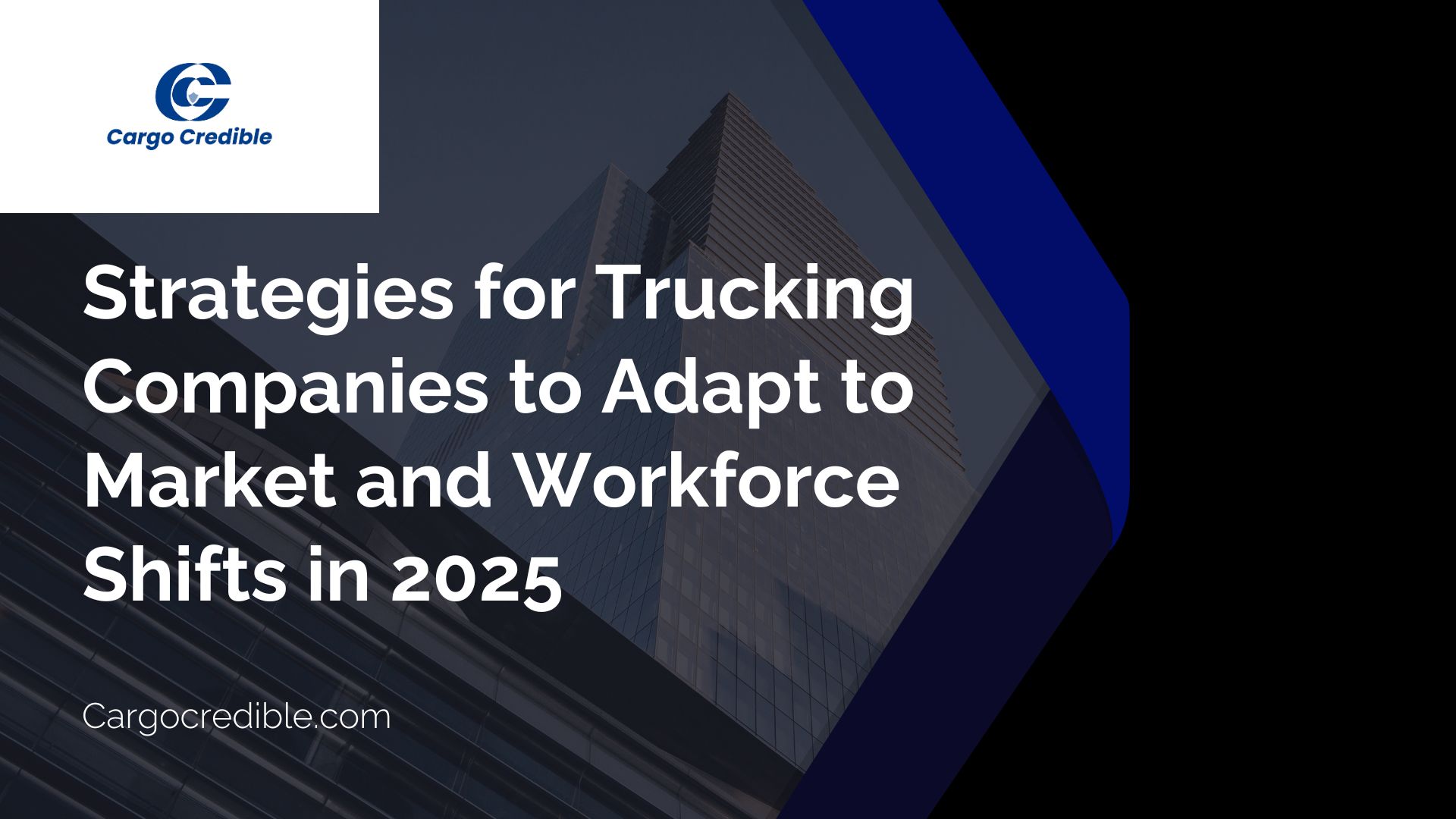Strategies for Trucking Companies to Adapt to Market and Workforce Shifts in 2025

You're a trucking company in 2025. You’ve got shiny trucks, loyal clients, and a solid business. But something feels off. Fuel prices jump like a yo-yo, deliveries need to be faster than ever, and younger drivers aren’t signing up. Older drivers are retiring. Technology is evolving at lightning speed. What do you do?
This blog breaks down real strategies for real trucking companies facing real changes in 2025 — explained simply enough for a 4-year-old or anyone who wants plain talk.
What’s Changing in 2025?
Market Dynamics:
- Fuel costs are unpredictable and impact budgets greatly.
- E-commerce is pushing more goods to move faster.
- Tougher rules require cleaner, greener trucks.
- AI and automation tools are becoming game changers.
- Smaller, tech-savvy carriers are competing fiercely.
Workforce Evolution:
- Older drivers are retiring, shrinking the workforce.
- Younger generations want balance—not 70-hour work weeks.
- Diversity and inclusion are critical, not optional.
- Training standards are rising.
- Gig work (like Uber for trucks) is on the rise.
The Old Game: A Simple Race
The trucking world once was straightforward — deliver freight from Point A to Point B as fast and cheap as possible. Drivers competed to be fastest. It was exhausting and focused only on speed and cost.
The New Game: A High-Tech Treasure Hunt
In 2025, trucking is no longer a race—it's a treasure hunt filled with smart tools, team players, and shifting roads.
- The Map Is Alive: Demand changes, fuel prices fluctuate, and new tech-packed players compete.
- Explorers Are Changing: Drivers now want tech, home time, and community—not just long roads and lone rides.
Smart Strategies for the New Treasure Hunt
1. Embrace Technology — But Do It Smartly
Support drivers with tech, don’t replace them. Use route optimization, driver assist tools (lane alerts, fatigue sensors), and digital load-matching platforms. Automate billing, dispatch, and scheduling. This reduces waste, saves fuel, and attracts tech-savvy drivers.
2. Redesign Driver Jobs for Today’s Workforce
Offer flexible schedules, consistent home time, paid time off, and wellness programs. Let drivers pick hauls that suit them—regional or short runs. Happy drivers stay longer.
3. Diversify Your Workforce — Intentionally
Recruit women, veterans, minority groups. Build mentorships and inclusive cultures. Train new drivers from underserved areas. Diverse teams innovate and stick.
4. Upskill, Train, Repeat
Partner with CDL schools, offer apprenticeships, provide ongoing training on tech, safety, and customer care. Skilled drivers are loyal and professional.
5. Go Green — Or Get Left Behind
Invest in electric or hybrid trucks, track emissions, teach eco-driving, and work with green-conscious shippers. Sustainability saves money and meets rising regulations.
6. Be Agile with Freight and Business Models
Offer on-demand services and last-mile deliveries. Use data to find profitable lanes. Scale operations up or down quickly.
7. Build a Driver-Friendly Brand
Celebrate drivers, share your culture on social media, seek driver feedback, and act on it. A strong brand attracts both customers and drivers.
Forgotten Workforce Goldmines
Tap into retired drivers for part-time roles, stay-at-home parents for remote dispatch, immigrants with driving experience, and people with disabilities for logistics tasks. These pools offer untapped talent.
Why These Strategies Work: The Treasure at the End of the Hunt
The companies winning in 2025 aren’t just the biggest—they are the smartest and kindest. They:
- Use technology as superpowers,
- Treat drivers like valuable explorers,
- Diversify freight and workforce,
- Communicate instantly and transparently,
- Lead with curiosity, flexibility, and a people-first mindset.
Market Snapshot: Why Change Is Critical
- The global trucking market is around $2.2 trillion in 2025 with fierce competition and rising tech adoption.
- Nearly 60% of companies will use IoT-based fleet management this year to monitor truck health and performance.
- Electric trucks’ market value is growing fast—expected to jump from $5.9 billion in 2025 to $40 billion by 2030.
- Companies embracing AI in fleet and route management are cutting costs and improving safety dramatically.
- Driver shortages remain critical, pushing innovation in hiring and retention.
Clinging to old ways won’t work anymore. The road ahead in 2025 is wide open for trucking companies ready to adapt — with smart tech, new workforce models, greener practices, and a culture that values people. By embracing these strategies, your company won’t just survive change, it will lead the way to a smarter, more profitable, and sustainable future.
Comments (0)
- No comments yet.